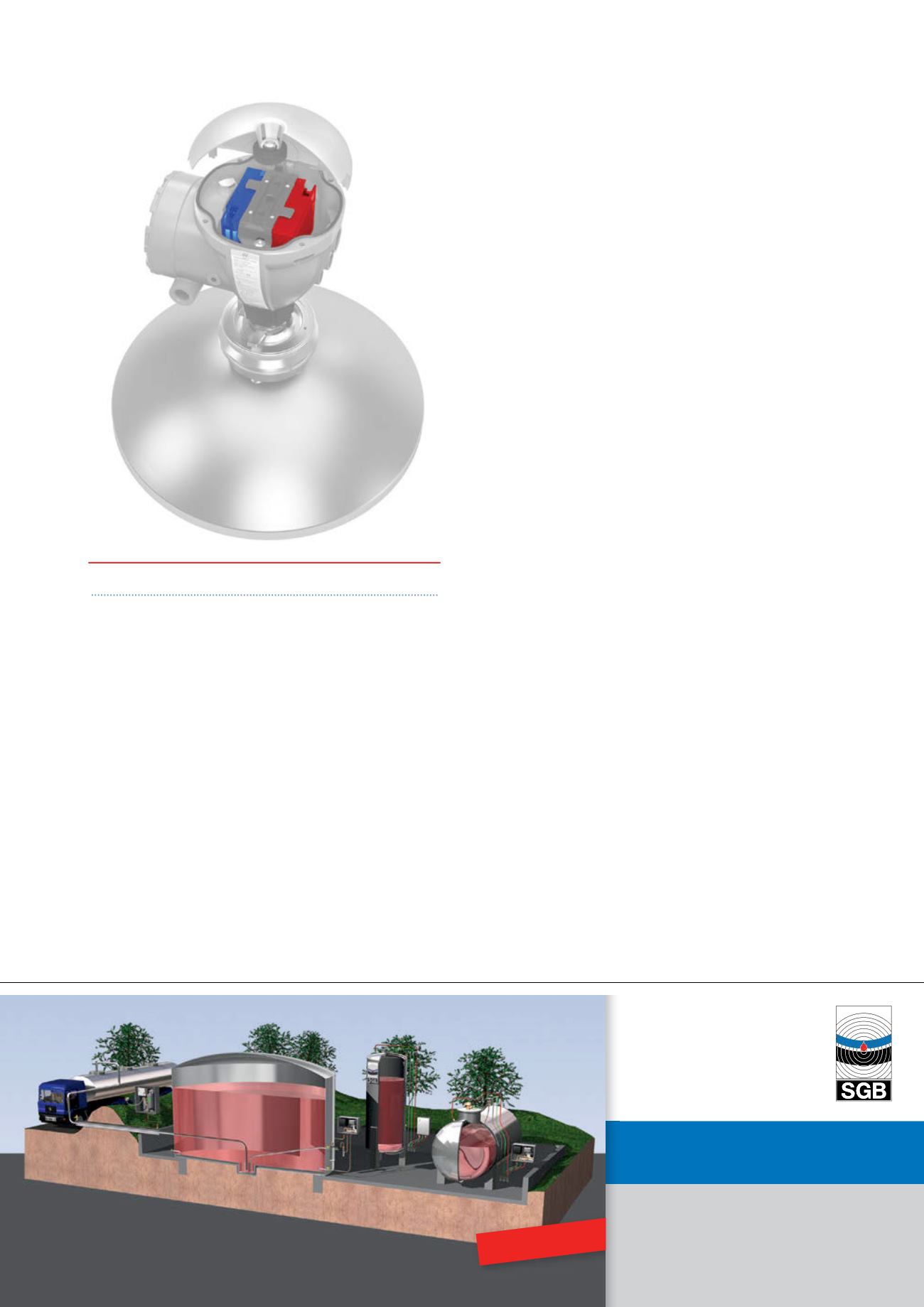
automated overfill prevention system (AOPS) that
automatically stops any filling above a certain level. It should
be noted that an AOPS is a safety instrumented system (SIS)
in the IEC 61511.
Such an AOPS is a system that must be independent of
the basic process control system (BPCS), which in this case is
the normal operations control system and is in addition to
the BPCS. The AOPS can be combined with any of the tank
Categories 1 - 3. However, in most cases, it would make sense
to combine it with either a Category 2 or 3 overfill prevention
system. Sometimes AOPS is also called ‘Category 4’.
Although currently AOPS are not yet frequently found in
current tank filling operations, they will eventually become an
important tool in the toolbox of overfill prevention. In order
to fulfil the API 2350 such automatic overfill prevention
systems in new facilities must be compliant with IEC 61511.
In the world of safety instrumented systems, IEC 61511 is
one of the specific industry standards that have been
developed which apply to electrical and/or electronic and/
or programmable electronic devices to control dangerous
processes. These standards cover possible hazards caused by
failure of the safety functions by the safety related systems.
These standards represent the best possible methodologies to
ensure that safety systems operate as intended. These safety
instrumented systems are applied to railway signaling systems,
remote monitoring and operation of process plants,
emergency shutdown systems, burner management systems
and many more. By their very design, when combined with
normal operating systems and basic process control systems,
they can achieve a level or risk reduction that cannot be
achieved without them.
So why the hesitancy to use them?
One key reason is that if they are not properly designed a
pipeline can be damaged by closing off the product flow too
quickly. In order to do avoid this, the valve closure time must
be sufficient so that there is no possibility of a line rupture. A
significant amount of data collection and engineering is
required to prevent the risk of a pipeline rupture. On receipts
from tank ships, the temporary hoses that connect ship to
terminal can disengage or rupture due to hydraulic transients,
and a spill in the water is generally more serious than a spill in
the terminal. Care must be exercised when applying AOPS to
any marine or pipeline operation.
An example of an AOPS configuration is seen in Figure 2
with radar level gauges connected to emergency shutdown
devices and logic solvers.
Why use API 2350 and not
some other safety standard?
The advantage of API 2350 is that it is a modern safety
standard for a specific use case (overfill prevention) in a
specific application (non-pressurised aboveground large
petroleum storage tanks). It was created by the industry for
the industry. A wide spectrum of industry representatives
participated in its creation: tank owners and operators,
transporters, manufacturers, and safety experts, just to
mention a few. It is a compilation of the minimum
requirements required to comply with modern best practices
in this specific application. Obviously the main purpose is
to prevent overfills, but another common result of applying
Figure 4.
Two radar gaugings in one housing.
LEAK PREVENTION TECHNOLOGY
For a clean and protected environment
Highest protection and safety for
• Refineries
• Tank farms
• Chemical plants
• Filling stations
SGB GmbH
Hofstr. 10
57076 Siegen
Germany
phone +49 271 48964-0
fax +49 271 48964-6
e-mail


